Why Benjamin Moore Simply White Is My Favorite White Paint Color
When I find a paint color I love, I stick with it. For awkwardly long periods of time Benjamin Moore Simply White has been one of those colors.
I first used Simply White in 2016 when it was named Benjamin Moore’s ‘Color of the Year.’ I was about to paint my condo in Chicago, and was looking for a shade of white. I wanted something fresh and modern, but warm, since the condo had warm hard finishes (flooring and countertops), and we weren’t going to change them.
The color of the year seemed like a good place to start … and it was. I tried it on the walls and never had to even buy another paint sample.
I’ve used the color in three other homes since that time.
In fact, when we were renovating our Vermont ski house, my husband joked that he was going to start a drinking game based around the number of times I said “simply white.” He decided he couldn’t drink that much. 🙂
Anyway, if you’re debating the best white paint color for your home, allow me to dazzle you with all the information you ever wanted to know about my favorite shade…Simply White.
What’s so great about Simply White?
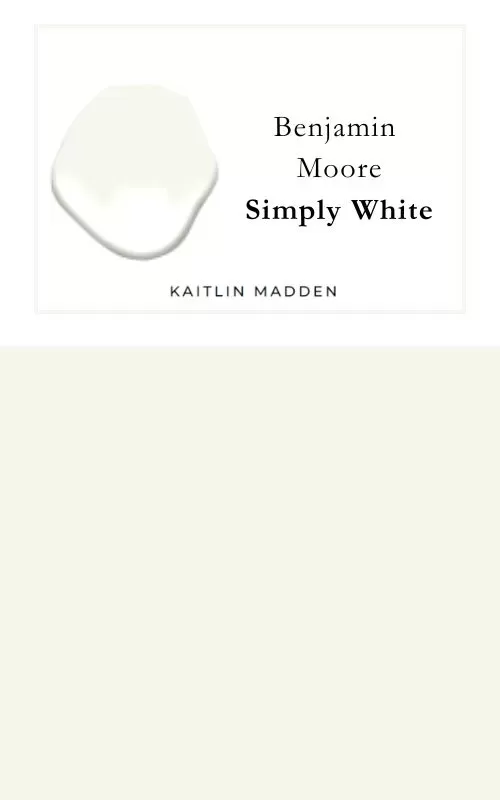
So what’s so great about Simply White? In my opinion, it’s a bright white that doesn’t look stark or sterile, thanks to it’s creamy undertones. It’s just a very versatile off white.
Despite how the color swatch appears, above, Simply White is not a cream color. If you walked into a room painted Simply White, your first thought would be white, not cream. I always find that, when it comes to white paint, the digital color swatches look a lot darker than they do on IRL walls.
Still, the warmth in Simply White is obvious. You can see that in my primary bathroom, below, where the Simply White walls are next to a true-white tile.
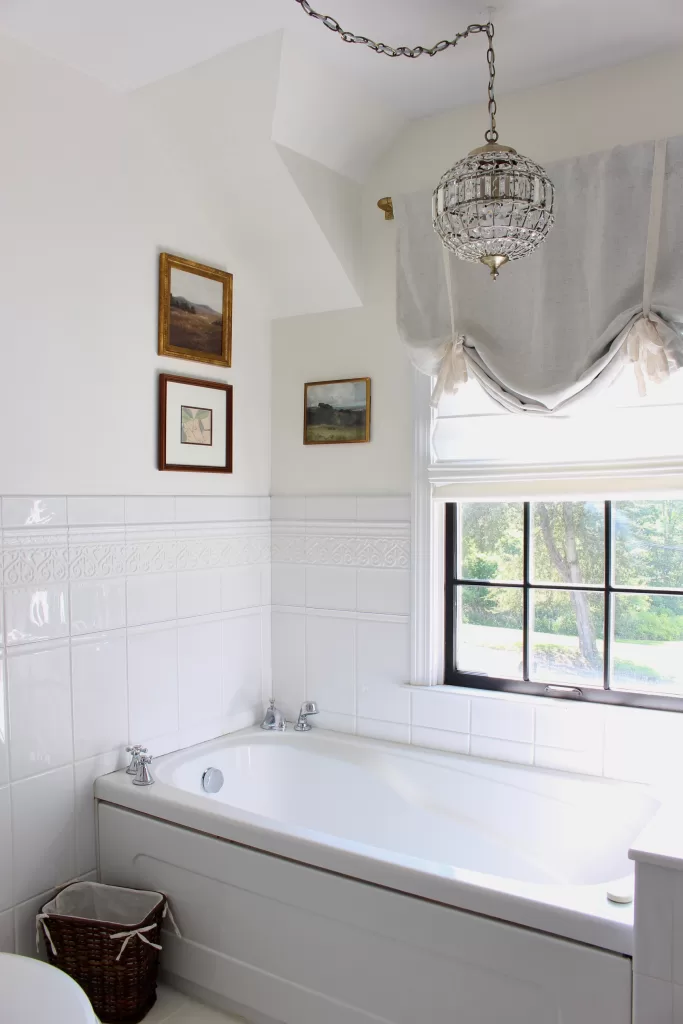
Here’s another look, this time at the walls in my kids’ playroom, which are painted Simply White, with straight from the can, non-tinted white trim paint.
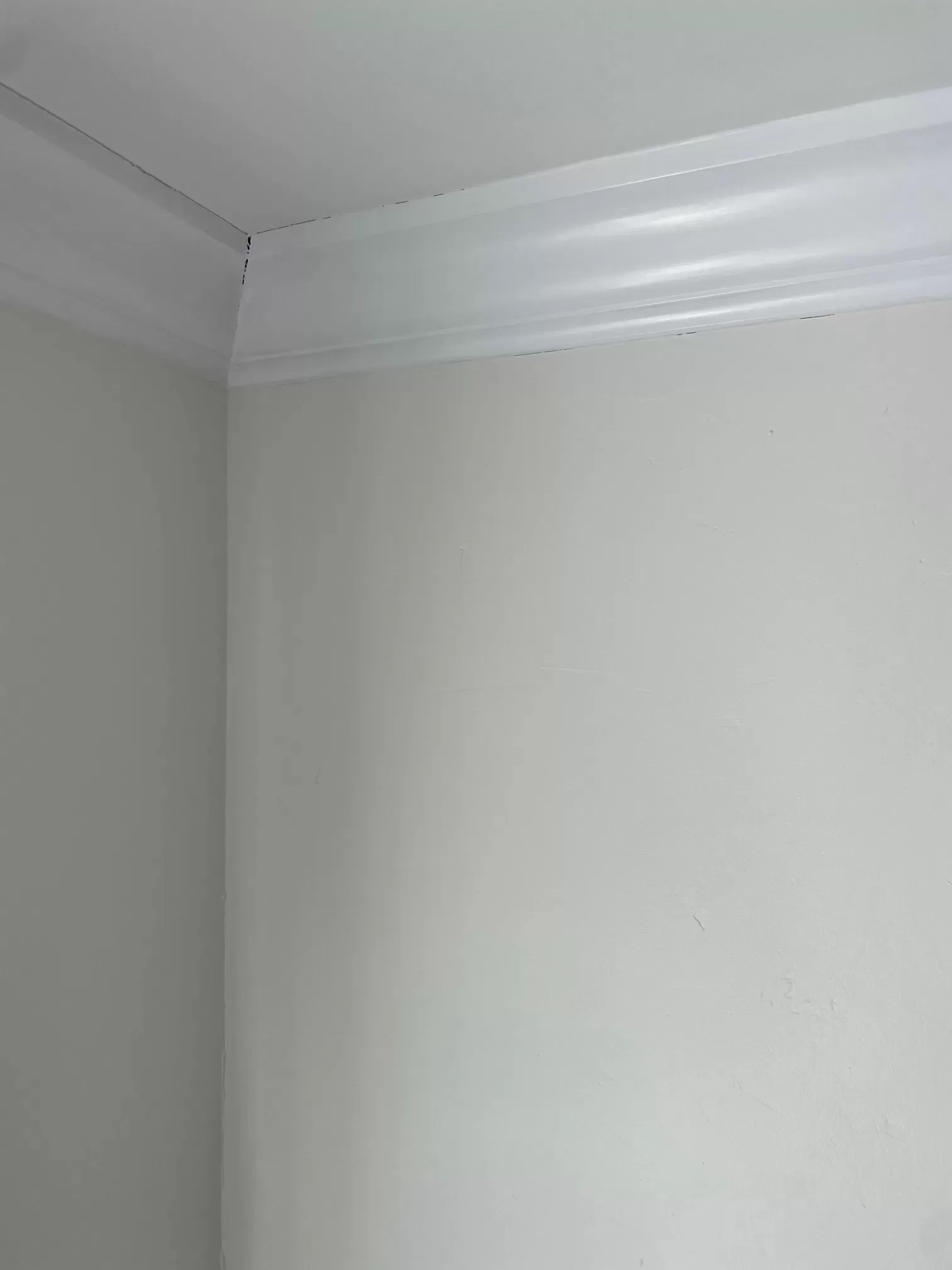
If you’re looking for a warm off white, there’s a good chance you’ll like Simply White.
Where to use Simply White
Personally, I’ve used Simply White all around my homes in various paint grades and finishes. It works in kitchens, living rooms, bedrooms, everywhere.
When choosing a paint color, thought, I find the most important thing to consider isn’t the type of room (i.e. bedroom or kitchen), but the style of the room, the lighting, and the hard finishes that already exist in the room.
Simply White works well in:
- Rooms with a decent amount of natural light
- Rooms decorated in a style that lends itself to warm finishes and color palettes, like traditional, transitional, coastal, farmhouse, etc.
- Rooms with warm hard finishes. Hard finishes are things like flooring, tile, faucets, etc.
To give you an idea of how Simply White looks around the home, here are a few examples of how it looks around the houses I’ve used it in. And keep scrolling for examples of Simply White in other homes, too.
Simply White Living Room
The first time I used the color was, as I said, our home in Chicago. It was a spec condo built in the early 2000s, and we wanted to make it look more contemporary. At the same time, I didn’t want a cool-toned white paint, because the hard finishes in the home (flooring and countertops) were warm-toned. I also prefer warmer colors.
So, we painted over the yellow-cream colored walls with Simply White. It definitely created fresh, modern vibe we were going for, but still tied in well with the existing finishes and my personal style.

And here it is again in my current living room, on both the walls and the built ins. I think its warm undertones make it a a great match for traditional decor with a modern twist, which tends to be my aesthetic.
Simply White Dining Rooms
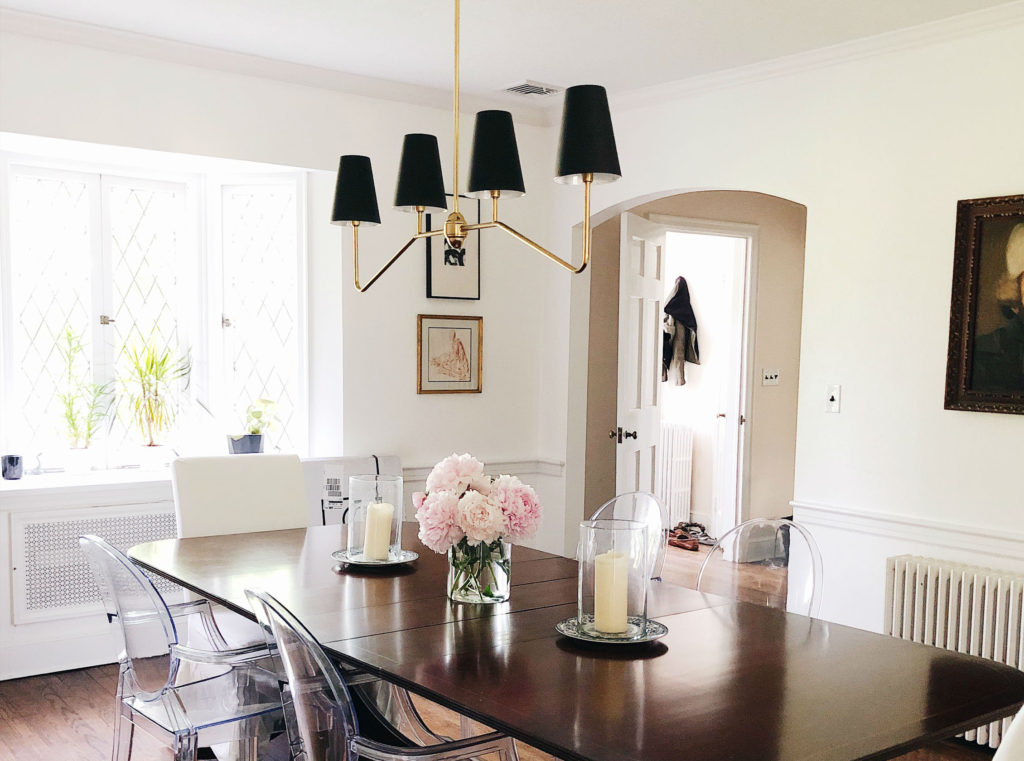
This is another photo from our current home, a 1930s colonial in Connecticut. Everything about this house is traditional. The architecture, the millwork, the layout. I love a traditional home and it has incredible bones, but it was painted shades of pink and taupe that made it just look old, not charming. Once again, I wanted a clean slate, and chose Simply White for almost the entire house.
I eventually re-painted the dining room in a green shade, but I loved SImply White in this room, too.
The third time I used Simply White was in our ski house in Vermont. Here, we used it to paint over a log wall in our cabin. The room we used it in is absolutely flooded with light, and in this space, the color was almost *too* bright.
Simply White Kitchen (walls)

This is the kitchen in our old condo in Chicago (the same home as the top living room photo), back in 2016. I used Simply White for the walls behind the cabinets.
Simply White Bathroom Walls
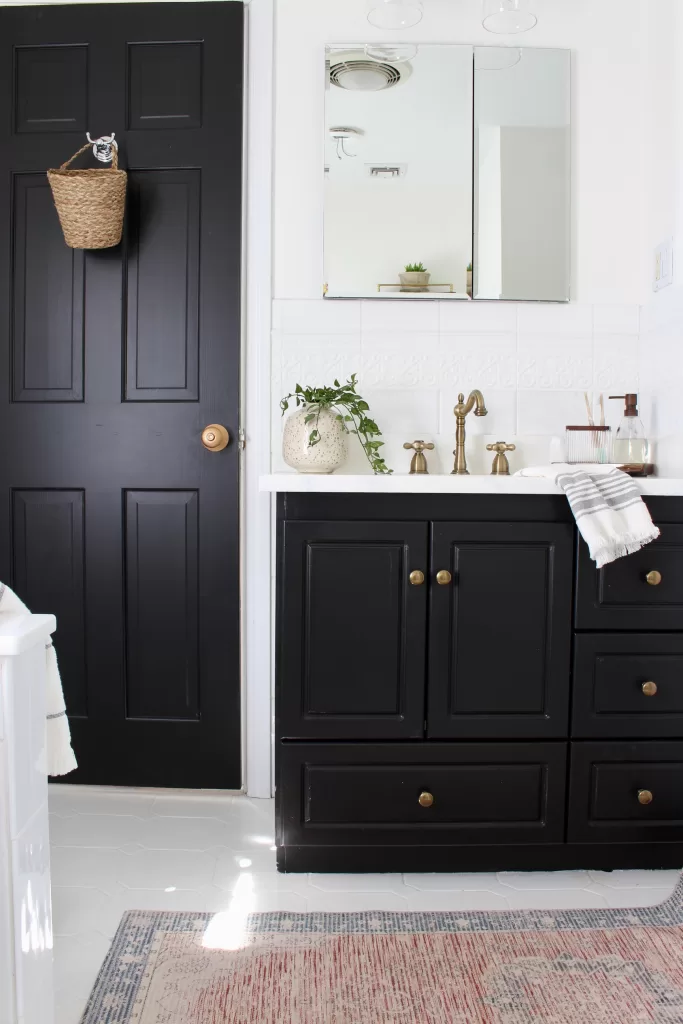
This is a great example of the hint of warmth in the color – if you look above the sink, you’ll notice there’s a bright-white tile backsplash there. Then just above that, the Simply White starts. See the slight difference?
What is the LRV of Simply White?

Simply White has a LRV, or light reflective value, of 89.52, which makes it a pretty bright paint color.
LRVs range from 0-100, with 100 being a true, bright white, and 0 being absolute black.
There are no paint colors with a 100 LRV. The closest they generally get is 93ish. By comparison, Benjamin Moore Hale Navy, another popular paint color, has an LRV of 6.3. So again, Simply White is a bright white.
If you’re debating Simply White vs. White Dove, or Simply White vs. Swiss Coffee know that Simply White is the brightest of the bunch.
Simply White vs Other Popular White Paint Colors
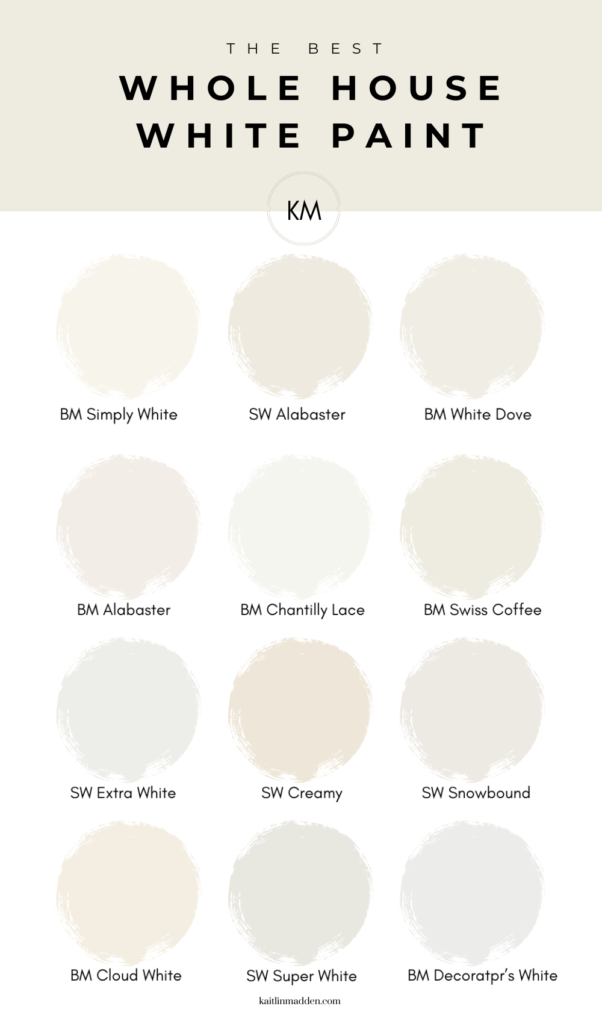
Simply White isn’t the only cult-favorite white out there. There are dozens of them, and a lot of them are similar. So, if you’re debating Simply White vs another color, here’s a quick run down on the differences.
Note that the images below make these paint colors appear darker than they do on the walls, so take them with a grain of salt!
Simply White vs. White Dove

This might be the most popular white paint battle of all time. Simply White and White Dove are two of the top warm white paint colors for walls. The key difference is that White Dove is a touch darker.
Simply White vs. Sherwin Williams Pure White

Sherwin Williams Pure White is one of the brand’s most popular shades. But it’s not, in fact, a pure, bright white. It has an LRV of 84, which means it’s a bit darker than Simply White. When I say ‘darker,’ know that Pure White is still a very bright white, it’s just not quite as bright as Simply White.
Pure White is also a neutral white that has chameleon tendencies, taking on the hues around it. I.e. In a warm space, it will look warm, and in a north-facing space or a room that gets a lot of shade, it will look cool. You can see in the photo above, the shade is a bit more of a greige-y white, white Simply White is more of a creamy white.
Simply White Vs. Alabaster

If I had to choose, Sherwin Williams Alabaster would be my second favorite white paint color. I tend to use it in spaces where Simply White just feels too bright, like in our bedroom, which you can see here. It’s a bit deeper than Simply White, and the undertones are more neutral, and less creamy.
Simply White vs. Cloud White

Benjamin Moore Cloud White is a off-white shade that’s slightly darker than Simply White. It has an LRV of 85.05, so it’s still a bright white, just, again, not as bright as Simply White. If you’re choosing a white for a space that gets lots of light and want a paint color with a little warmth to it, Cloud White is a good option.
Simply White vs. Decorator’s White
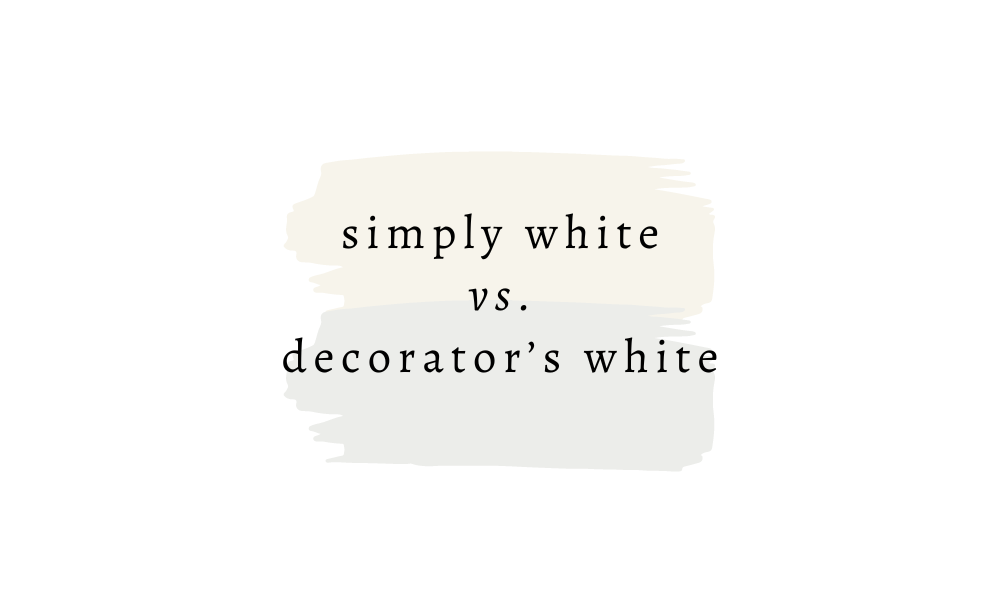
If you’re looking for an off white without any yellow or beige tones, Decorator’s White is a good choice. Unlike Simply White, it’s a cool white, and gets it’s undertones from blue-gray hues. If you’re debating whether you want a warm or cool-toned white paint, these are two great shades to compare in your space as a starting point.
Simply White Vs. Swiss Coffee

Benjamin Moore Swiss Coffee is one of the brand’s most popular shades of white, especially since Shea McGee declared it her favorite paint color. If you’re looking for a warm white with more depth, that’s not quite as bright as Simply White, Swiss Coffee is a pretty shade to try.
Also note, Shea McGee usually uses the color at 75% strength, which gives it a whiter appearance!
Simply White Vs. Chantilly Lace

With an LRV of 90.4, Benjamin Moore Chantilly Lace is brighter than Simply White, though still considered an off white. It’s a more neutral white than Simply White, in that it’s undertones aren’t obviously warm or cool.
Trim Colors for Simply White
If you’re looking for a trim color for Simply White, I have three suggestions:
A Pure White Shade
If you want to paint your trim a different shade of white than Simply White, go for a bright, clear white shade to create just a touch of contrast. Using a white color with an obvious undertone, or one slightly deeper than Simply White will make either the walls or the trim look muddy or dingy.
I personally love the out-of-the-can white trim paint against SImply White walls. This ensures you aren’t getting something with an undertone that will accidentally contrast the walls.
Using Simply White in a different sheen
The other thing I’ve often done in my own homes when I’ve used Simply White on the walls is to use Simply White for the trim, too, just in a different sheen. I go for flat or eggshell paint on the walls, and then a semi-gloss on the trim. The look is subtle, but super sophisticated (especially now that color-washing has become so popular).
Going for a bit of contrast
If you want a bolder look, you can also choose a colored trim. In this case, Simply White is incredible versatile because there are all kinds of shades that it’ll work with. For something more elegant, I love the idea of using Benjamin Moore Revere Pewter for a trim color
Benjamin Moore Simply White FAQs
Is Simply White too yellow?
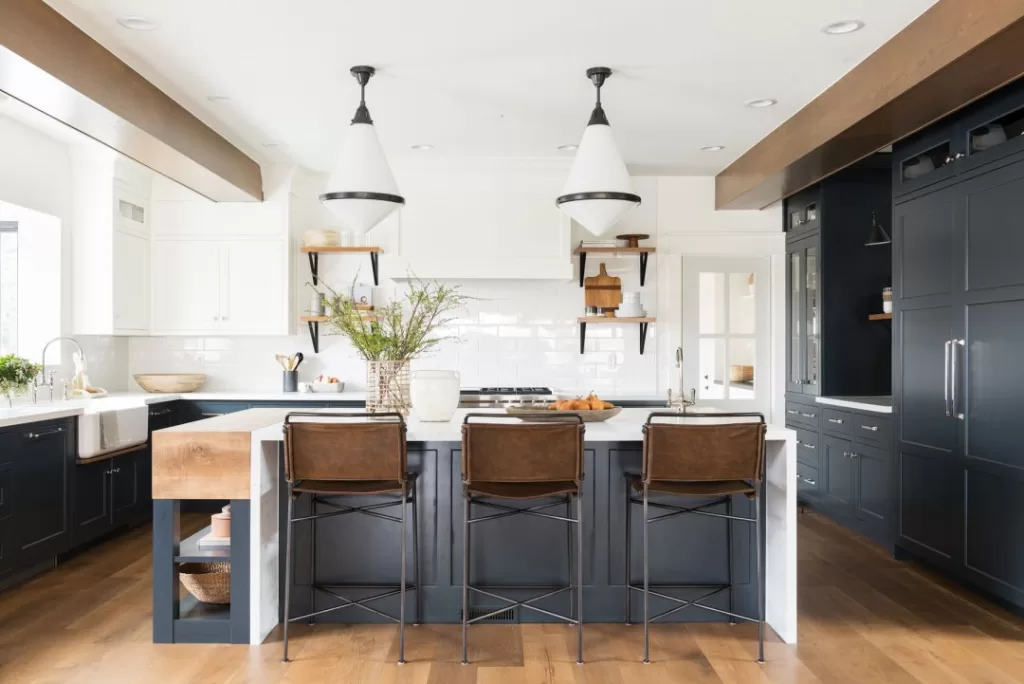
One of the common concerns about Simply White is that it will be too yellow, and it can be, depending on your preferences. It’s considered a warmer paint color because, as I mentioned, it has with yellow-green undertones, and if you break it down into its RGB values, it has the least amount of blue ( RGB profile is 96.86% red, 96.86% green and 93.33% blue).
At the same time, it depends a lot on your space and what is reflecting into and around your room. In rooms that get less natural light, or when a room is receiving warm, dim sunset light, the creamy tones tend to be more visible. On the other hand, however, if it’s in a very bright space, the undertones will be almost completely washed out and it’ll look like a pure white. I’ve used it in a space with a ton of light, and in that case it was almost too bright of a white.
Again, this is why it’s always worth the $5 to buy a paint sample, because a color can look very different depending on the environment.

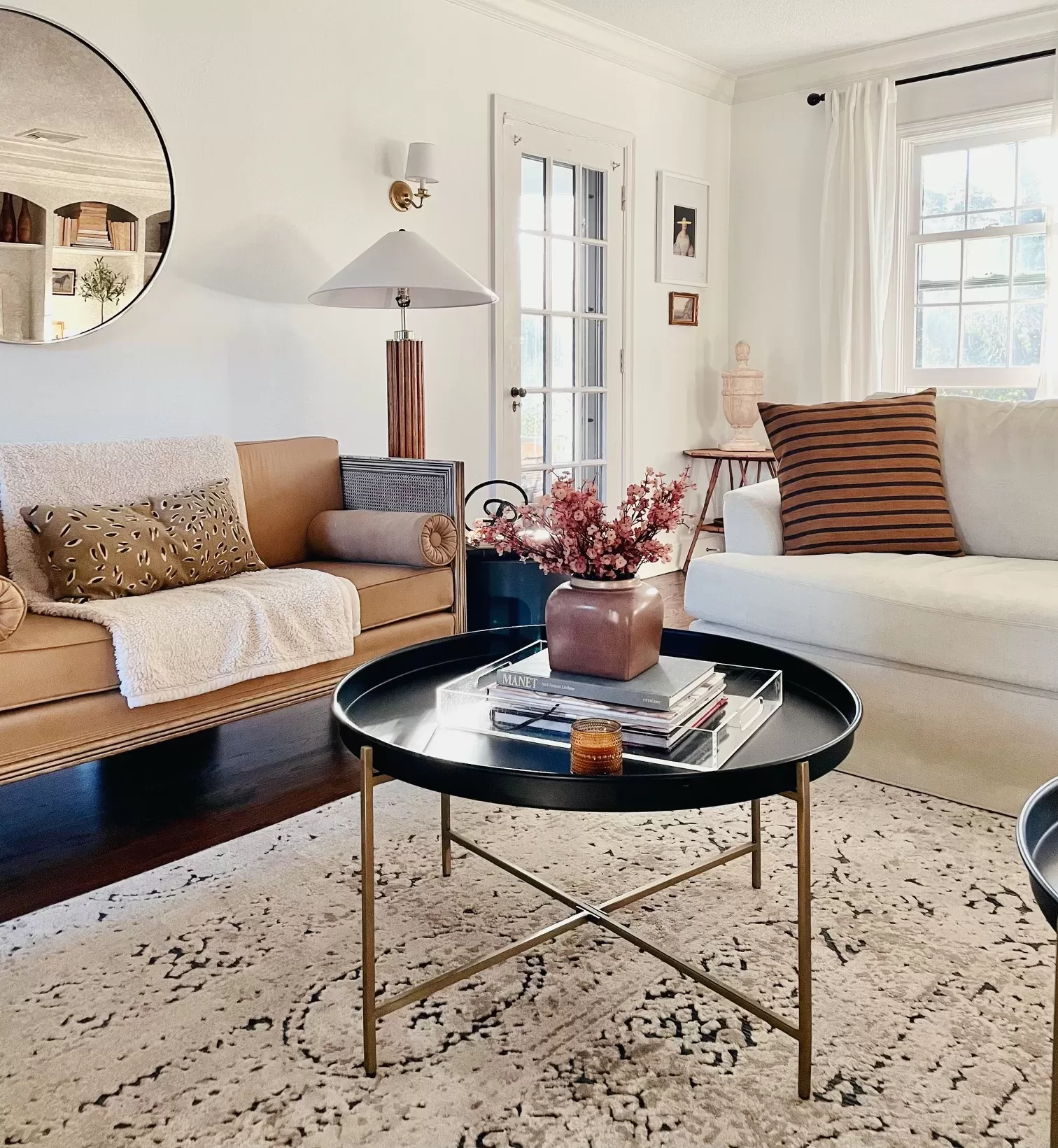
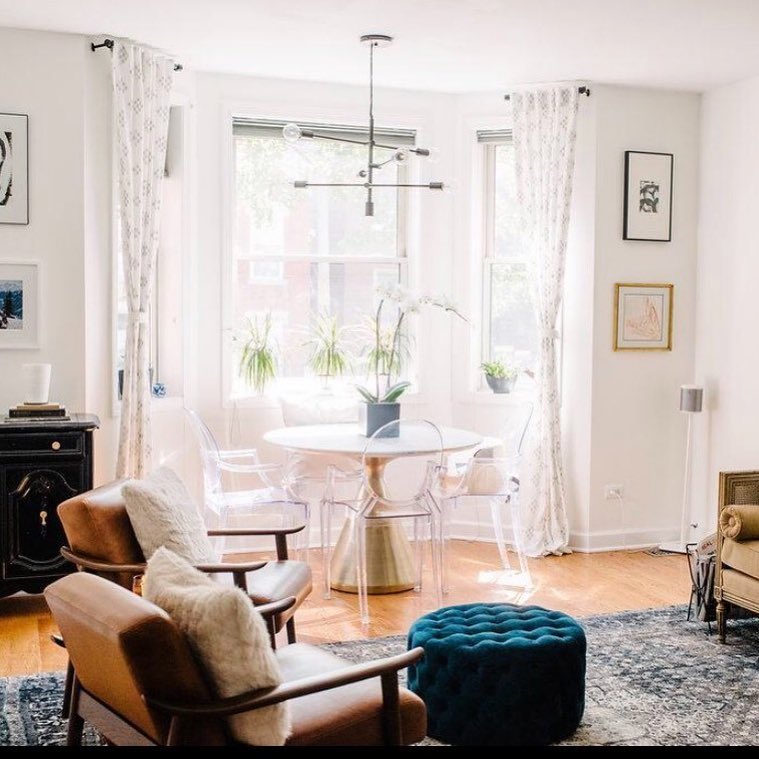
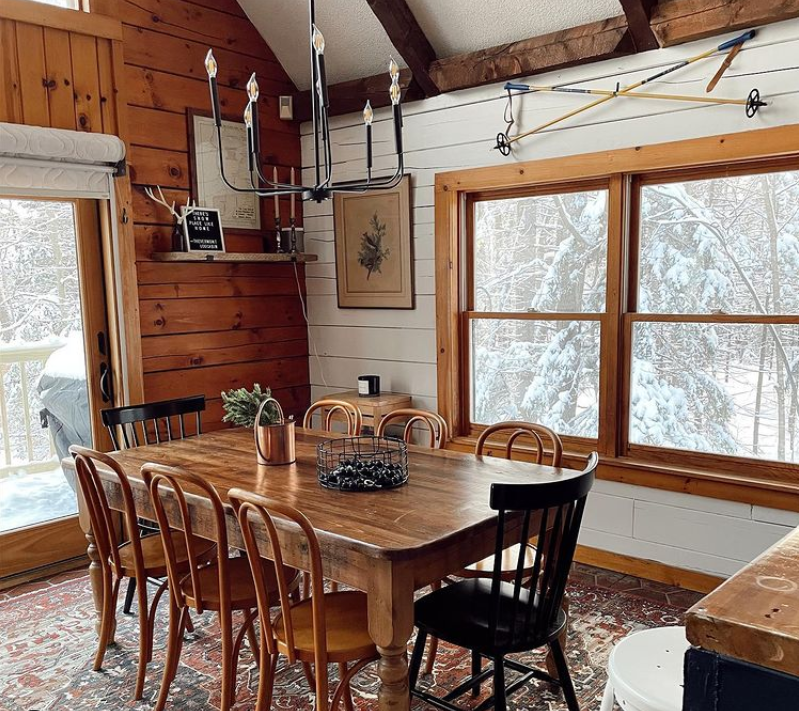
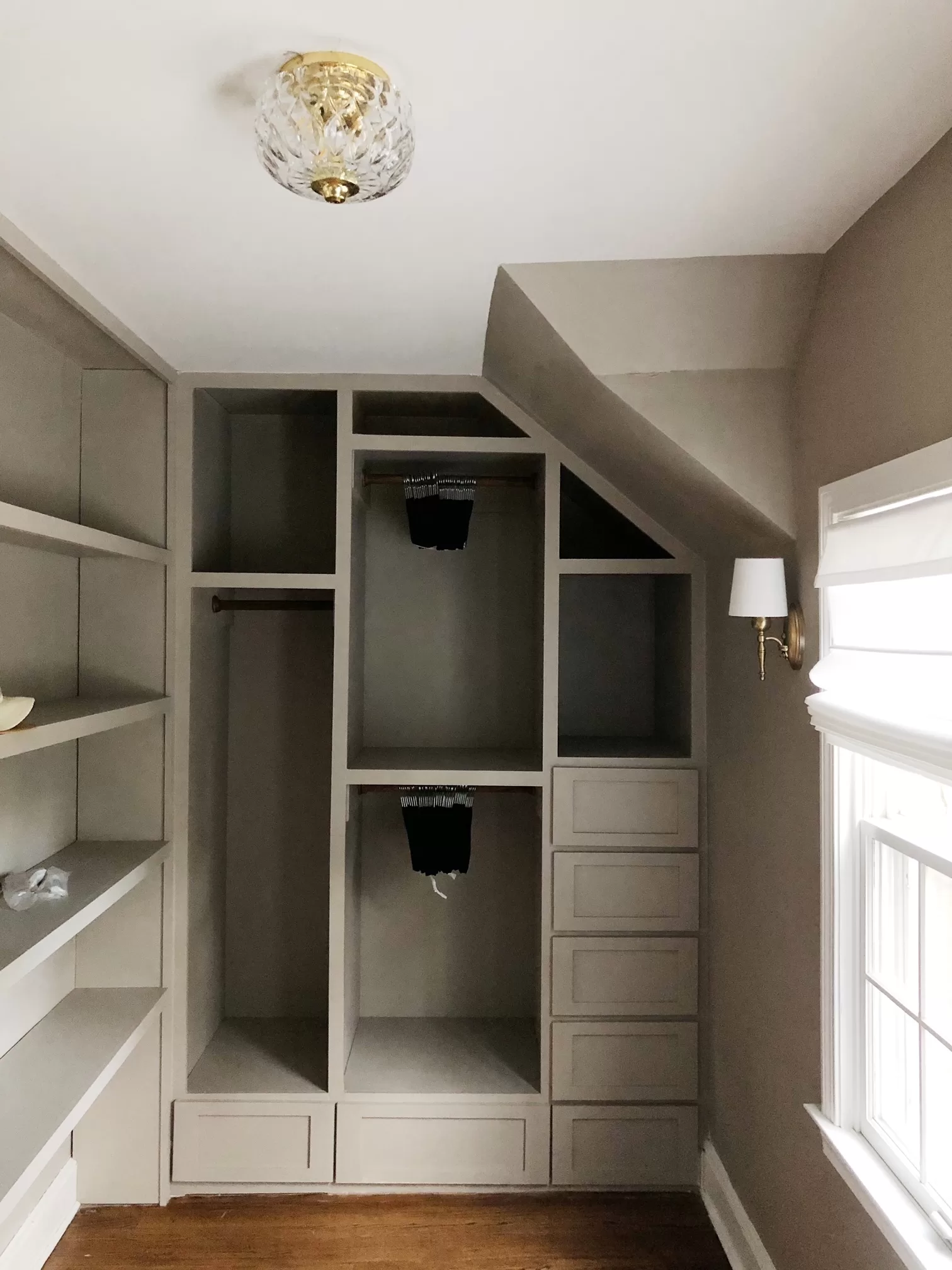
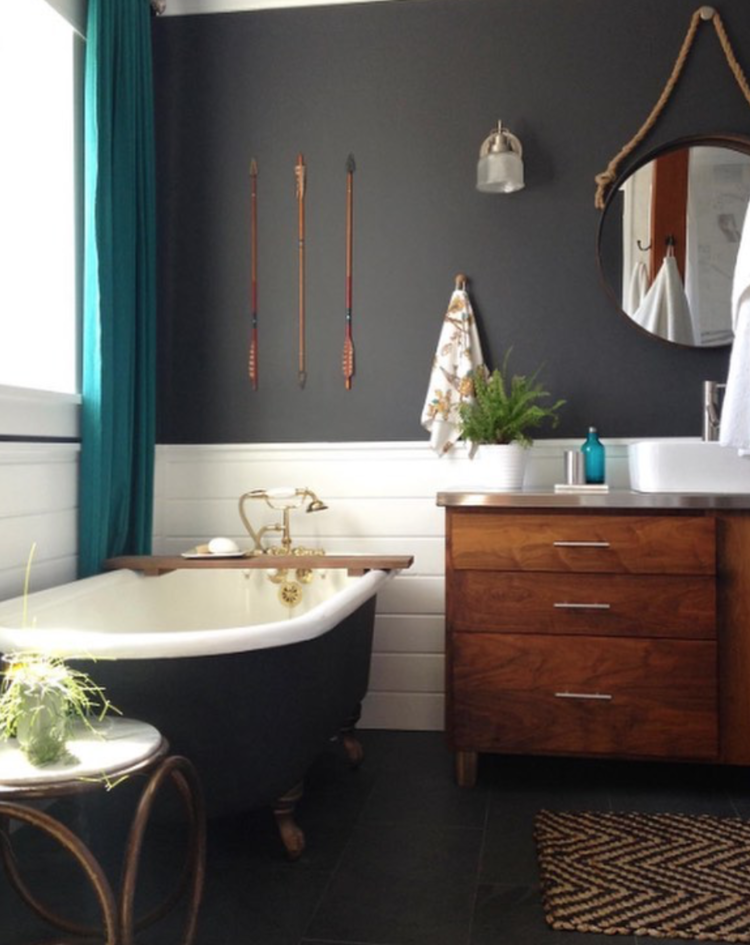
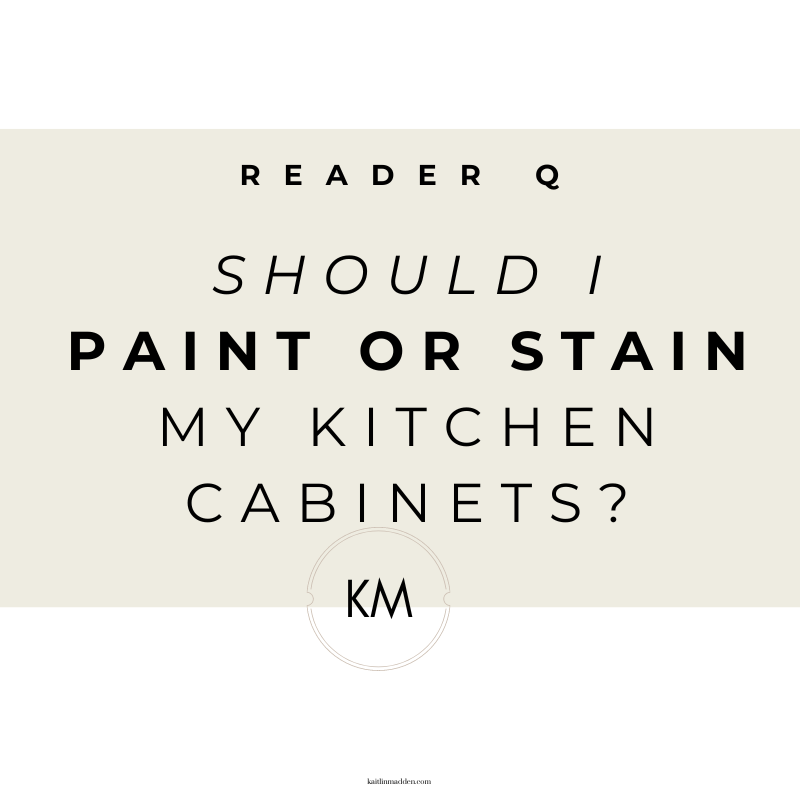



4 Comments